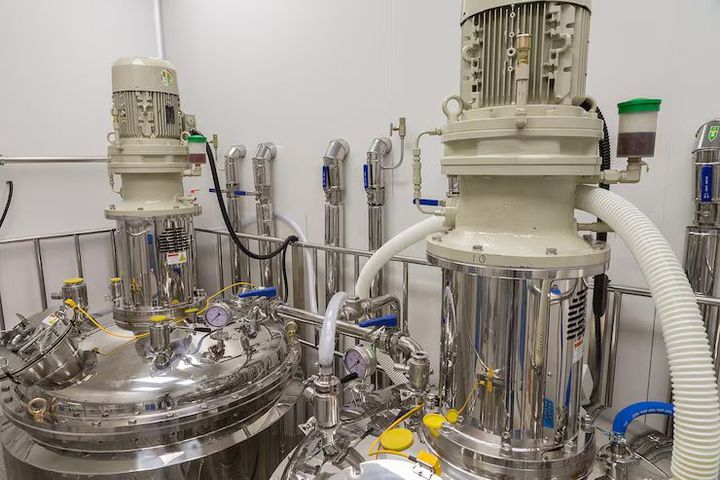
Industrial Mixer Machine Overview: Understanding Working Principles, Components, and Key Functions
An industrial mixer machine is equipment designed to blend, combine, or homogenize materials in manufacturing environments. These machines are used in sectors such as food production, pharmaceuticals, chemicals, construction materials, paints, cosmetics, and agriculture. The purpose is to ensure that different substances—whether liquids, powders, granules, or pastes—are mixed to achieve uniform consistency.
Industrial mixing exists because many products require precise and consistent blending to meet quality standards. Whether forming dough in large bakeries, creating powdered supplements, producing emulsions in cosmetic creams, or mixing chemical formulations, the industrial mixer machine supports controlled material processing at scale.

Industrial mixers vary in design and operational method. Common mixer types include:
-
Ribbon mixers for dry powder blending
-
Planetary mixers for viscous materials
-
High-shear mixers for emulsification
-
Drum or tumbler mixers for bulk solids
-
Continuous mixers for uninterrupted processing
Each mixer type is selected according to material characteristics, required texture, and production volume.
Importance
Industrial mixing is central to quality control, consistency, and safety in manufacturing. The significance of industrial mixer machines can be understood through a few key points:
-
Product Uniformity: Proper mixing ensures even distribution of ingredients, influencing product quality and performance.
-
Process Efficiency: Automated mixing reduces manual effort, improves production speed, and minimizes operational errors.
-
Material Compatibility: Different materials require precise blending conditions such as speed, temperature, and mixing time, ensuring chemical and physical stability.
-
Industry-wide Applications: From pharmaceuticals to food processing, industrial mixers play a role in products used daily by consumers and businesses.
Industries affected include:
-
Food and beverage
-
Chemical processing
-
Pharmaceutical manufacturing
-
Construction and building materials
-
Cosmetics and personal care
-
Agricultural feed production
These industries rely on mixers to solve problems related to batch inconsistency, formulation accuracy, and scalable production.
Recent Updates
The past year has seen several developments in the field of industrial mixing equipment, influenced by automation, sustainability, and digital monitoring.
-
Smart Mixing Systems (2023–2024): More mixers now include sensors and programmable logic controllers (PLC) to automate mixing cycles, monitor energy usage, and record batch data.
-
Energy-Efficient Designs: Manufacturers have been optimizing motor efficiency and mixing blade geometry to reduce energy consumption.
-
Hygienic and Easy-Clean Designs: Food and pharmaceutical sectors demand mixers that comply with strict sanitary standards. In 2024, the focus has increased on stainless steel construction and smooth internal surfaces to reduce contamination risks.
-
AI and Predictive Maintenance: New monitoring software analyzes vibration, torque, and temperature to predict wear before failure, minimizing downtime.
-
Modular Mixer Configurations: Mixers designed for quick reconfiguration support flexible production lines, especially where small batch variations are frequent.
Working Principles and Key Components
The working principle of an industrial mixer involves mechanical agitation applied to materials to achieve blending. The motion may involve rotation, folding, cutting, shearing, tumbling, or fluid flow depending on the machine type.
Common components include:
| Component | Function |
|---|---|
| Mixing chamber | Holds materials during blending |
| Motor | Drives the mixing mechanism |
| Blades or agitators | Perform mechanical mixing through motion |
| Speed controls | Adjust rotation rate and mixing intensity |
| Discharge outlet | Releases mixed material after processing |
| Sensors (optional) | Monitor temperature, load, or viscosity |
Factors influencing mixing performance:
-
Material viscosity or particle size
-
Agitator shape and speed
-
Batch volume
-
Temperature control needs
-
Mixing duration
Key Functions
Industrial mixer machines perform essential functions such as:
-
Homogenization: Achieving uniform blending of ingredients.
-
Reduction of Particle Agglomeration: Breaking lumps to enhance texture and consistency.
-
Heat Transfer: Certain mixing processes help transfer heat within material to control chemical reactions.
-
Emulsification and Suspension: Creating stable mixtures of substances that would otherwise separate.
These functions ensure consistency, quality stability, and product reliability.
Laws or Policies
Regulations affecting industrial mixer usage differ by industry and region, especially where product purity or safety is critical.
Examples include:
-
Food Safety Standards (e.g., FSSAI, FDA, HACCP): Require mixers used in food processing to be made of food-grade materials and designed for sanitation.
-
Pharmaceutical Manufacturing Guidelines (e.g., GMP): Mixing processes must meet validated procedures to ensure batch uniformity.
-
Environmental Regulations: Mixing units used in chemical sectors may be subject to emissions and waste handling guidelines.
-
Occupational Safety Rules (e.g., OSHA Standards): Require safe operation, guarding of moving parts, and proper noise level control.
These policies influence how mixers are designed, cleaned, maintained, and operated.
Tools and Resources
Individuals or organizations working with industrial mixing systems may find the following resources helpful:
-
Mixing Simulation Software (for studying flow patterns and optimizing performance)
-
COMSOL Multiphysics
-
ANSYS Fluent
-
-
Process Control Systems
-
PLC and SCADA for automated monitoring
-
-
Material Compatibility Guides
-
Engineering handbooks for powder and liquid mixing
-
-
Industry Standards and Reference Sites
-
ISO Standards for industrial equipment
-
ASTM guidelines related to material testing
-
-
Technical Data Sheets and Manufacturer Manuals
-
Provide operational parameters, cleaning instructions, and maintenance guidelines
-
FAQs
What is the purpose of an industrial mixer machine?
Its purpose is to blend or homogenize materials in manufacturing processes, ensuring uniform consistency, stability, and product quality.
Which industries commonly use industrial mixers?
Common industries include food processing, pharmaceuticals, chemicals, cosmetics, agriculture, and construction materials.
What factors determine the type of mixer needed?
Material properties (powder, liquid, viscosity), batch size, desired mixing speed, required homogeneity, and process temperature control guide mixer selection.
What is mixing efficiency?
Mixing efficiency refers to how quickly and uniformly a mixer blends materials while minimizing waste and energy use.
Are industrial mixers automated?
Many modern systems integrate digital controls, timers, and sensors, enabling process automation and consistent batch outcomes.
Conclusion
Industrial mixer machines play a central role in modern manufacturing by ensuring the reliable and uniform blending of materials. Their importance spans various industries where product quality, consistency, and formulation accuracy are essential. Recent advancements, including automation, smart monitoring, and energy-efficient designs, continue to improve mixing performance and operational reliability. With proper selection, maintenance, and adherence to regulatory guidelines, industrial mixers support safe, efficient, and scalable production processes across numerous applications










